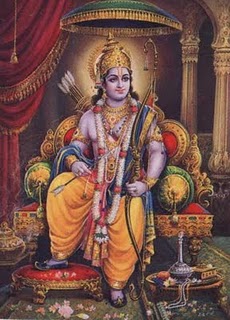Dasavtar concept and the theory of evolution
In the Hindu mythology the Dasavatar (10 incarnations) of Lord Vishnu,who incarnated from time to time to save mankind from the evils
In the Hindu mythology the Dasavatar (10 incarnations) of Lord Vishnu,who incarnated from time to time to save mankind from the evils
The first four are said to have appeared in the Satya Yuga (the first of the fouror ages in the time cycle described within Hinduism). The next threeavatars appeared in the Treta Yuga, the eighth descent in the Dwapara Yuga and the ninth in the Kali Yuga. The tenth is predicted to appear at theend of the Kali Yuga in some 427,000 years time Yugas
The 9 incarnations of Vishnu, which have taken place so far according to the myth, are (1) Matsya - fish, (2) Koorma - tortoise, (3) Varaha - boar, (4) Narasimha - half man-half lion, (5) Vaman - dwarf man, (6) Parashuram - man with an axe, (7) Rama - moral man, (8) Krishna - philosophical man and (9) Buddha - spiritual man. The 10th incarnation is Kalki or holocaust, which will come when evil overtakes the whole world in the milennia to come.
| The Avatar | Evolution stage |
| Matsya - fish | Acquatic form |
| Koorma - tortoise | Amphibian |
| Varaha - boar | Land animals |
| Narasimha - half man-half lion | Transition to human |
| Vaman - dwarf man | Homo sapiens |
| Parashuram - man with an axe | Savages |
| Rama - moral man | Family and social life |
| Krishna - philosophical man | Philosophy and teaching |
| Buddha - teacher | Spiritual life |
The scientific theory of evolution generated from western world states that life on earth began as single-cell organisms and later developed into multi-cell living beings. Moreover, the theory further states that aquatic creatures came into existence first. Then came amphibians that could exist in water as well as on land. Land-dependent animals and airborne birds followed the amphibians. Finally, human beings completed the cosmic drama of creation.
As if to explain this theory of evolution, Indian mythology says that first there was only primeval water which covered the earth like a flood. Vishnu's
First incarnation as a fish (Matsya) indicated the first appearance of life in the aquatic form. It appeared in Satya Yuga.
Second incarnation as a tortoise (Koorma) represented the amphibian stage. It appeared in Satya Yuga.
The boar (Varaha) manifestation in his third incarnation stood for the stage of animal life on land. It appeared in Satya Yuga.
The transition from animals to humans was beautifully advanced by a concept of half-man-half-lion (Narasimha) in the fourth incarnation.
It appeared in Satya Yuga.
Vishnu’s fifth incarnation showed the further march of evolution – the appearance of early homo sapiens, symbolised by the dwarf Vamana.
It appeared in Treta Yuga.
Then, tall but violent savages wielding weapons walked the earth. Parashuram was that violent axe-bearing sixth incarnation. It appeared in Treta Yuga.
Evolution had by now definitely entered the human stage, and the human form and mind were getting more and more refined, first in the moral sense and then in the spiritual.
Rama, the seventh incarnation in the human form was an example of rectitude, courage and morality. It appeared in Treta Yuga.
Krishna, the eighth incarnation in the human form who originated the Bhagvad Gita, was the philosopher, the teacher of the world. It appeared in Dwapara Yuga.
Gautama, the Buddha, the ninth incarnation, was closest to nirvana,, moksha or salvation. It appeared in Kali Yuga.
And Kalki, the tenth incarnation, yet to manifest itself, would be the ultimate terminator who would finish the evolutionary process in one mighty holocaust. It will appear in the end of Kali Yuga.





